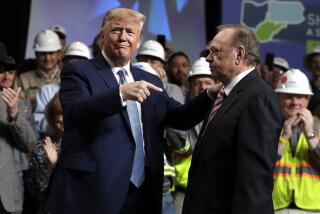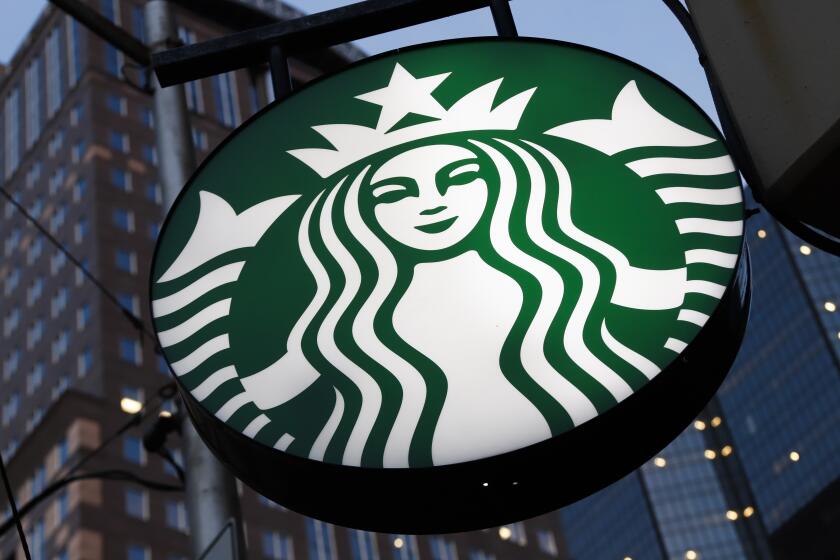Column: Trump taps Kodak (yes, that Kodak) to bring stability to the drug market
More than a few people likely were left scratching their heads when President Trump announced this week that the federal government will loan Eastman Kodak $765 million in taxpayer money to develop ingredients for generic drugs.
Kodak? The camera company? The producer of Kodachrome film, which Paul Simon adored for making you think all the world’s a sunny day?
Yes, that Kodak, the same 20th century photography giant that failed to transition to a 21st century era of digital cameras (even though it invented the darned things in 1975). The same Kodak that filed for bankruptcy protection in 2012.
“It was one of the great brands in the world,” Trump acknowledged during a press conference to announce the move. “Then people went digital, and Kodak didn’t follow.”
Even so, he said Kodak now will use “advanced manufacturing techniques” to produce drug ingredients “in a manner that is both cost-competitive and environmentally safe.”
The company eventually will produce as much as a quarter of all active ingredients needed for generic drugs taken by Americans, Trump said.
“We’ll be competitive with almost all countries, and soon with all countries,” he declared.
This is one of those rare examples where I find myself in agreement with the president, at least conceptually.
The issue he’s trying to address is a serious one. The vast majority of active ingredients for prescription drugs come from China and India.
Acetaminophen, for example, is America’s most widely used drug ingredient, found not just in namesake pills but also as a component of hundreds of cold, flu and allergy remedies. Nearly all of the world’s supply of it comes from China and India, with China accounting for roughly two-thirds of the total.
If the international pharmaceutical supply chain becomes disrupted — as happened earlier this year when the COVID-19 pandemic erupted — that could severely affect Americans’ access to many prescription drugs.
So Trump is correct to sound a note of alarm that the United States is vulnerable to production (and political) issues abroad.
That said, the economics of his plan are highly questionable.
Most large-scale manufacturing has departed this country, never to return. Auto parts, electronics, shoes, toys, clothing — pick virtually any manufacturing industry.
Chances are, the core components, if not the finished product, are produced overseas by workers paid just pennies on the dollar compared with what an American worker would make.
It’s a given, therefore, that the undeniable benefits of domestic production — more jobs, better quality — come with a trade-off, and that’s higher consumer prices.
William Comanor, a professor of health policy and management at UCLA, told me the average cost of a generic prescription in this country, with at least some ingredients manufactured abroad, is currently $26.
“Maybe that goes up to $35” under Trump’s plan, he said.
That’s a 35% increase. That’s what Trump is putting on the table.
He’s basically asking Americans if they’d be willing to pay 35% more on average for many generic meds in return for the peace of mind that comes with greater control over production.
That may strike some people as a good deal. For most people who struggle to keep healthcare costs under control, though, it may be asking a lot.
And where do we draw the line? There was a time when all TV sets were produced in the United States. Now there are none.
Would you be willing to pay significantly more for that wall-mounted flat screen if at least some of its production could be done domestically? Would you pay more for a car if its parts were manufactured here rather than Mexico?
“That’s exactly the right point,” Comanor acknowledged. “Personally, I say bring generics home and leave auto parts abroad.”
Geoffrey Joyce, chairman of the Department of Pharmaceutical and Health Economics at the USC School of Pharmacy, noted that “Kodak’s cost structure is likely to be substantially higher than overseas producers.
“It’s natural to suspect this is a jobs program given the choice of Kodak, a teetering company,” he observed.
Indeed, why Kodak?
“That’s a very good question, one that I’m not sure I have a good answer for,” replied Richard Frank, a professor of health economics at Harvard Medical School.
Kodak owned the drug company Sterling Winthrop from 1988 to 1994, but it produced over-the-counter remedies such as aspirin, not more complicated prescription medicines.
Kodak’s executive chairman, Jim Continenza, said Kodak will utilize its “vast infrastructure, deep expertise in chemicals manufacturing, and heritage of innovation and quality” to help restore “a reliable American pharmaceutical supply chain.”
Um, OK. Except Kodak reported a first-quarter loss of $111 million pursuing business opportunities that it supposedly knows well, such as printers.
After the massive loan from the Trump administration was revealed, giving the company a quarter-century to repay the money, Kodak’s stock soared by almost 2,000%.
Worth noting: Among the drugs Kodak initially will focus on will be hydroxychloroquine, the malaria drug that Trump has repeatedly pushed as a coronavirus treatment but that scientists say can cause harm.
Harvard’s Frank said that while increased domestic drug production may be prudent from a national security perspective, tapping a company with little pharmaceutical experience as your backstop doesn’t make a lot of sense.
“There’s a lot more to it than just knowing chemical engineering,” he said. “You need to know the suppliers. You need to know the regulatory structure. You need to know the distribution network.”
Anirban Basu, a professor of health economics at the University of Washington, said it’s hard to understand why drug companies would purchase higher-priced ingredients from Kodak, “unless the government puts out a regulation forcing them to do so.”
That’s definitely not something Trump is proposing, or that any Republican lawmaker would support.
As such, the federal government can throw as much cash as it pleases at domestic manufacturing.
American consumers are accustomed to prices for manufactured goods that reflect their cut-rate international roots — and few if any pharmaceutical chief executives would buck that trend, even for the most patriotic of reasons.
I agree with Trump that it would be great if we could introduce more security to the drug pipeline.
As with his dream of revitalizing the coal industry, however, this may be an ambition that’s well past its sell-by date.
More to Read
Inside the business of entertainment
The Wide Shot brings you news, analysis and insights on everything from streaming wars to production — and what it all means for the future.
You may occasionally receive promotional content from the Los Angeles Times.











